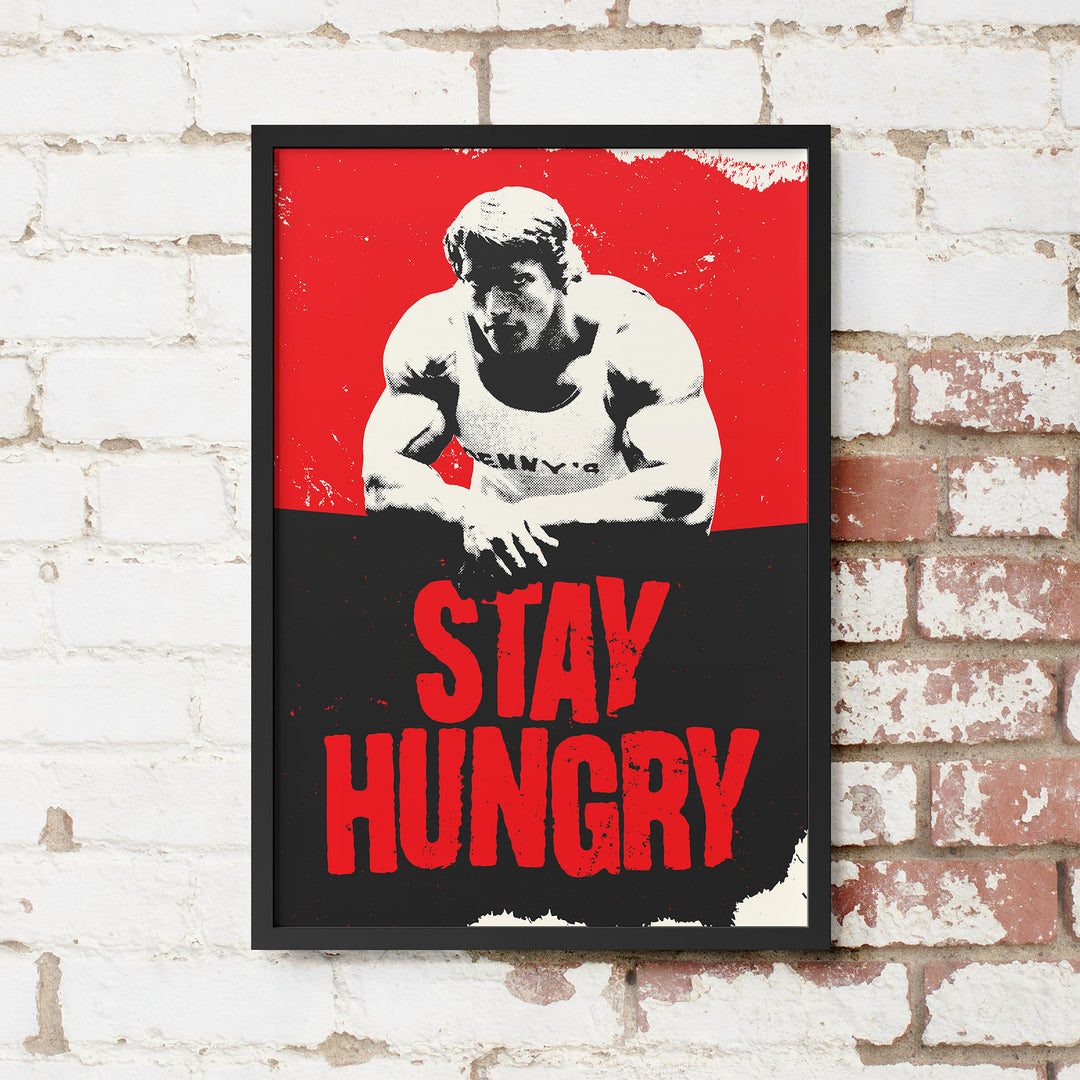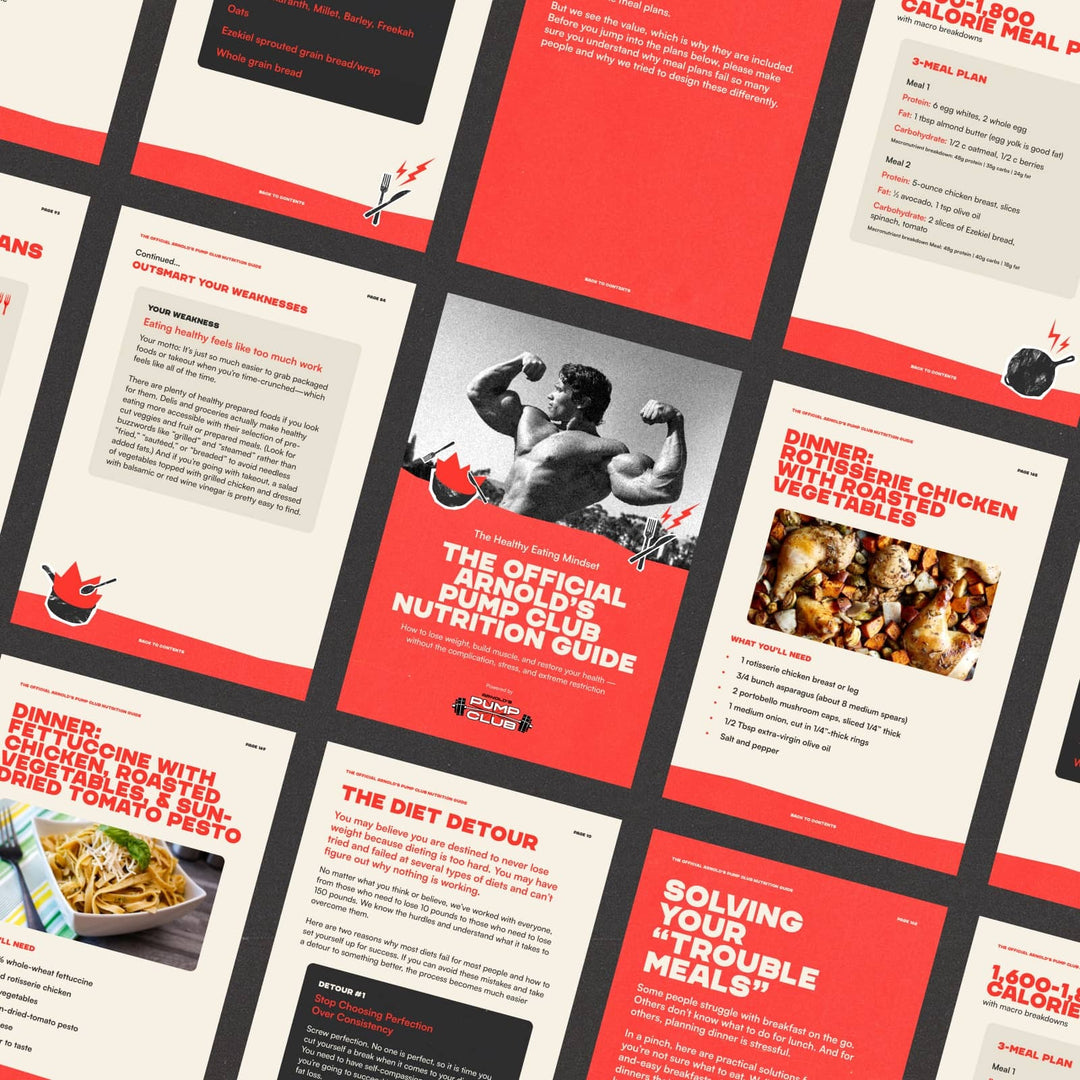Welcome to the positive corner of the internet. Every weekday, we make sense of the confusing world of wellness by analyzing the headlines, simplifying the latest research, and offering quick tips designed to make you healthier in less than 5 minutes. If you were forwarded this message, you can get the free daily email here.
Today’s Health Upgrade
What happens when you boost GLP-1 with your diet?
How to build an unbreakable routine
A new way to predict baldness
Arnold’s Podcast
Want more stories from Arnold? Every day, Arnold’s Pump Club Podcast opens with a story, perspective, and wisdom from Arnold that you won’t find in the newsletter. And, you’ll hear a recap of the day’s items. You can subscribe on Apple, Spotify, Google, or wherever you listen to podcasts.
Nutrition
What Happens When You Boost GLP-1 With Your Diet?
Sometimes, the simplest answer is not the right one. And that’s especially true if you’re trying to figure out hunger.
New research suggests that triggering hormonal changes with dietary changes — including boosting GLP-1 — does not necessarily lead to improved appetite and eating less.
The massive success of medications like Ozempic and Wegovy (known as GLP-1 agonists) has created a different way of thinking about food. Because the drugs help quiet “food noise” and shut down cravings, there’s more interest than ever in these hormones. But triggering them via your diet is not the same as what the pharmaceutical doses are capable of achieving.
The new study provided a better understanding of this concept by comparing two weeks of eating a low-fat or a low-carb diet for breakfast and monitoring eating throughout the rest of the day.
The low-carb meal resulted in more GLP-1 and lowered the hunger hormones ghrelin and leptin more than the low-fat meal. However, participants eating the low-carb breakfast ate more calories the rest of the day.
Why doesn’t a GLP-1 increase from diet work like the medication? When GLP-1 increases from the foods you eat, it usually stays active in your body for just a few minutes. On the other hand, the medications can make it stay active for hours, which is why you see dramatic changes in hunger, digestion, and fullness.
What does it mean? For one, we need to do more research. But it also means other research could offer better clues on how to manage hunger if you are not on a GLP-1 medication.
Prior research suggests that the hyper-palatability of food (think foods with sugar, salt, and fat that you want to keep eating), texture (hard foods are consumed less than soft foods), and caloric density all might play a bigger role in controlling your appetite than just focusing on hormonal changes.
In other words, if you want to manage your hunger and eat less, it might be helpful to focus on foods that have a harder consistency (think nuts instead of peanut butter), are less processed, and have more protein and fiber.
Mindset
How To Build An Unbreakable Routine
Arnold’s “secret” to success: knowing how to build healthy habits that feel as automatic as brushing his teeth.
But, if you’ve ever tried to create a habit, you know it’s much harder than it appears.
Thankfully, routines don’t need to be overly complicated or detailed. If you want to build a habit that sticks, you only need to focus on three essential elements: cue-behavior reward.
The cue reminds you to act, the behavior is the action (such as exercise), and the reward helps you repeat the behavior until it happens almost without thinking. All three elements form your habit, even though your goal is the desired behavior.
Without realizing the science, Arnold built a habit loop that helps ensure he doesn’t miss his workouts.
The Cue: Friends show up at Arnold’s home.
The Behavior: They ride bikes to the gym and lift weights.
The Reward: Breakfast and time with his friends.
Whatever you do, creating a simple habit loop is an effective and proven way to program the types of changes you want.
But don’t forget a key piece of behavioral change: If you want your routine to stick, make it so easy that it’s hard to fail.
That’s not to say you can’t build complicated habits or routines. But it’s common to create so much complication that it works against you, making it harder for the habit to become an effortless part of your day.
Instead, remember that easy habits pave the way for more challenging habits. So, if you’ve struggled in the past, use the habit loop cue-action-reward to build your way to bigger goals.
Start by focusing on two or three things you'd like to accomplish. Look at the bigger picture of what will make your day feel like a win, so — even if things get crazy — you know where your focus needs to be so you can still make any day a success.
Health
A New Way to Predict Baldness?
There’s so much we still don’t know about baldness, but clues that could help with prevention are adding up.
A new study found a relationship between metabolic syndrome and baldness, and a blood test could help identify potential risk factors.
Metabolic syndrome is a blanket term used to indicate a higher risk of several serious health conditions — such as heart disease, diabetes, and stroke. Someone is diagnosed when they display the following characteristics: being overweight or obese and having high blood pressure, fasting glucose, triglycerides, and cholesterol.
Over the last few years, more research has identified that people who have “androgenic alopecia” — the most common form of male pattern baldness — are at a higher risk of having metabolic syndrome.
However, it might also be that risk factors for metabolic syndrome could make you more likely to lose your hair.
The latest study found that low levels of HDL-C (cholesterol), uric acid (an antioxidant that reduces oxidative stress), and vitamin D — specifically 25(OH)D (the type of vitamin D in your blood) — are linked to a higher likelihood of baldness.
While prior research identified the strong relationship between genetics and androgenic alopecia, the newer research continues to show that your lipid metabolism might be a variable you can control that affects the health of your hair.
More research is needed, but adjusting lifestyle factors — such as a healthy diet and regular exercise — can lead to changes that reduce your likelihood of metabolic syndrome and prevent the development of early-onset male pattern baldness. Understanding these risk factors can help with early identification and potential methods to manage or slow down hair loss.
—
Publisher: Arnold Schwarzenegger
Editors-in-chief: Adam Bornstein and Daniel Ketchell




























































